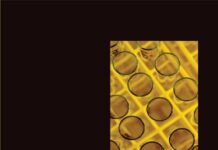
Ebook Info
- Published: 2014
- Number of pages: 320 pages
- Format: PDF
- File Size: 3.60 MB
- Authors: Alexander Bird
Description
Thomas Kuhn (1922-96) transformed the philosophy of science. His seminal 1962 work “The Structure of Scientific Revolutions” introduced the term ‘paradigm shift’ into the vernacular and remains a fundamental text in the study of the history and philosophy of science. This introduction to Kuhn’s ideas covers the breadth of his philosophical work, situating “The Structure of Scientific Revolutions” within Kuhn’s wider thought and drawing attention to the development of his ideas over time. Kuhn’s work is assessed within the context of other philosophies of science notably logical empiricism and recent developments in naturalized epistemology. The author argues that Kuhn’s thinking betrays a residual commitment to many theses characteristic of the empiricists he set out to challenge. Kuhn’s influence on the history and philosophy of science is assessed and where the field may be heading in the wake of Kuhn’s ideas is explored.
User’s Reviews
Reviews from Amazon users which were colected at the time this book was published on the website:
⭐Bird begins by claiming in the preface that Kuhn was not really a philosopher, and then devotes the rest of the book to amending Kuhn’s wishy-washy layman’s theories with the self-important rigour and precision of modern analytic philosophy. This approach is not without its merits but it also spirals inwards quite frequently and forgets that Kuhn’s theories are about science after all. I will complain about some results of this lack of perspective.Bird claims that “some revolutions can be conservative accumulations of new but significant discoveries and theories. Such revolutions are not explicable in terms of one paradigm failing, generating a crisis and then being replaced by a competitor. These revolutions may just be blossoming of normal science. … The case of the discovery of the structure of DNA illustrates this. … [This] discovery that many regard as the most important of the century simply does not fit Kuhn’s description of scientific development—it originated in no crisis and required little or no revision of existing paradigms even though it brought into existence major new fields of research.” (pp. 60, 62).But Bird provides no evidence that this discovery was the result of normal science in Kuhn’s sense. The fact that it “required little or no revision of existing paradigms” suggests on the contrary that it was the result of pre-paradigmatic research rather than normal science. That Bird fails to recognise this elementary distinction is ironic since he has just spent an entire chapter rambling about the difference between a “revolution_K” (meaning a revolution in Kuhn’s sense) and a revolution in the common sense; if only he had taken the time to give “normal_K” science its own flashy subscript notation too then maybe he would not have confused it with “normal” science.In the chapter on “Perception and world change,” Bird’s main thesis is that “the effect of theoretical belief on perceptual experience is weak and marginal” (p. 122). On this basis he seems to draw the conclusion that Kuhn’s claims regarding theory-ladenness of observation are relatively harmless (cf. pp. 147-148, 155, 202). But Bird’s entire discussion concerns only direct sensory perception, while Kuhn also emphasised theory-ladenness of scientific data that is not directly perceptual (“The data themselves had changed”; Structure, p. 134). By completely ignoring this latter aspect of theory-ladenness Bird misrepresents Kuhn and omits an important factor from his later discussions of incommensurability and relativism.My final quarrel is with Bird’s attempted refutation of incommensurability, in particular concerning Kuhn’s claim that Newtonian mechanics is not a limiting case of Einsteinian mechanics since, e.g., Newtonian mass differs from Einstenian mass.The following is Bird’s conclusion on the matter. “To summarize, Kuhn assumes that laws fix intensional meaning and thereby fix, in a strict manner, extension and reference. If it is further assumed that all laws play a part [which is Kuhn’s view, according to Bird] then it follows that if the term in question refers, then the laws must be true [but ‘Newton’s laws are not all true’ according to Bird; p. 174]; correspondingly if one or more of the laws fails to be true then there is no reference, in which case incommensurability of reference cannot arise. … Consequently his argument fails to establish incommensurability due to shifts in reference.” (p. 176)One wonders what Bird means when he says that according to Kuhn “laws fix meaning.” Surely he does not have in mind only (what is commonly called) Newton’s laws, for that would invalidate his premiss since it would be a gross misrepresentation of Kuhn. As Bird notes elsewhere, “[Kuhn] accepted the empiricist view that scientific terms get their meanings by some sort of implicit definition from the bulk (or even all) of the theory in which they play a part” (p. 206). “Some sort of implicit definition” is certainly very different from “fixed by three or four laws.” (Incidentally, if Bird really did mean Newton’s laws here then it is far from obvious that “Newton’s laws are not all true” since one can argue that Newton’s laws are essentially tautological without auxiliary assumptions (cf. e.g. Poincare), which would preclude Bird’s conclusion.)So presumably the “laws” Bird is speaking of comprise the entire Newtonian theory with all its auxiliary assumptions. But then the “it follows”-inference in the above quotation is very questionable. Bird’s proof of this step goes as follows. Take all of Newton’s laws and replace “mass” everywhere by x. “Now the laws taken together will form a complex predicate, which we may abbreviate L(x), so the intension of ‘N-mass’ [i.e. Newtonian mass] may be characterized as: ‘the property x such that L(x)'” (p. 173). So if Newtonian mass has a reference then it follows that L(N-mass), which is Newton’s laws, is true. “Hence Kuhn’s account leads to the conclusion that it is knowable a priori that if his, Kuhn’s, assumptions are true, then Newton’s laws are true” (p. 173). But Bird gives no justification for the assumption that the laws in question can be reduced to a list of propositional statements from which the concept of mass can be straightforwardly detached. It seems far from obvious to me how this assumption is to be reconciled with Kuhn’s notion of mass defined through “some sort of implicit definition” based on a mishmash of interdependent assumptions regarding force, space, time, etc.
⭐This book was recently discussed alongside Fuller’s much more interesting “Thomas Kuhn” and Kuhn’s own “The Road since Structure” in the New York Times as part of the current Kuhn-mania (July 21, 2001). Bird is a good textbook writer, and the book succeeds in domesticating Kuhn’s intellectual project for mainstream, rather unimaginative philosophers. Without any disrespect intended, is there really much to be gained by trying to show why Kuhn was really an “empiricist” and not the “naturalist” that he should have been (according to Bird) — especially if in the next breath you’re also claiming that Kuhn wasn’t really a philosopher, when it got down to it (which Bird claims)? I know there are philosophers who are used to this way of doing business, but it leaves the reader with a rather impoverished, though adequate, view of Kuhn.
⭐
Keywords
Free Download Thomas Kuhn (Philosophy Now) 1st Edition in PDF format
Thomas Kuhn (Philosophy Now) 1st Edition PDF Free Download
Download Thomas Kuhn (Philosophy Now) 1st Edition 2014 PDF Free
Thomas Kuhn (Philosophy Now) 1st Edition 2014 PDF Free Download
Download Thomas Kuhn (Philosophy Now) 1st Edition PDF
Free Download Ebook Thomas Kuhn (Philosophy Now) 1st Edition


